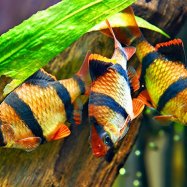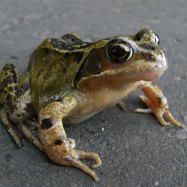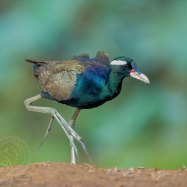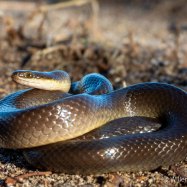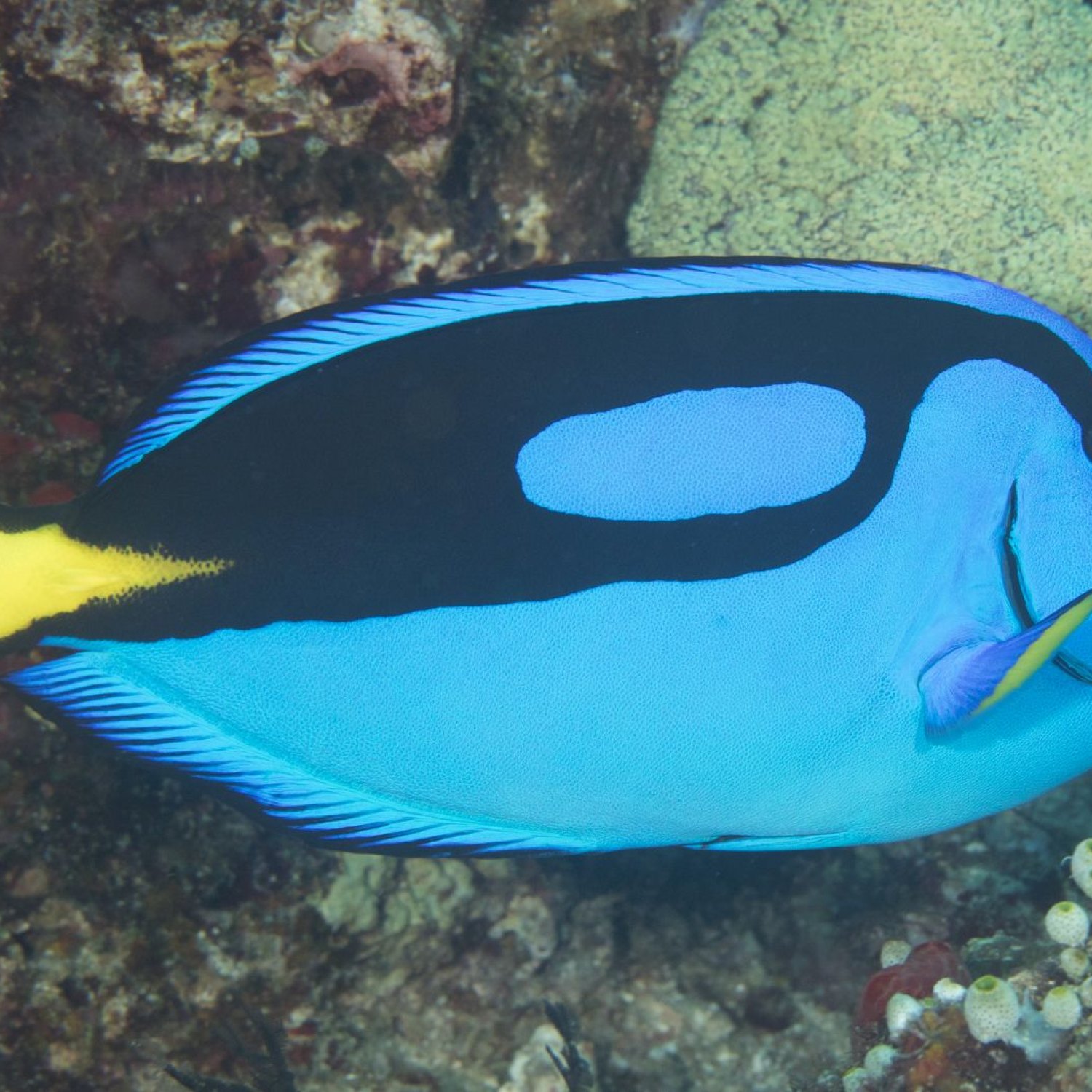
Blue Tang
30 cm (11.8 inches)
The Blue Tang, found in tropical and subtropical waters, is a beautiful fish with a distinctive oval and laterally compressed body shape. It belongs to the Acanthuridae family and can grow up to 30 cm (11.8 inches) in length. Its vibrant blue color and friendly nature make it a popular choice for aquariums. #BlueTang #Acanthuridae #TropicalFish #AquariumPets
Animal Details Summary:
Common Name: Blue Tang
Kingdom: Animalia
Habitat: Coral reefs
The Enchanting Blue Tang: A Colorful Beauty of the Coral Reefs
The ocean encompasses a magnificent world filled with diverse and intriguing creatures. Among them, the Blue Tang stands out with its vibrant blue color and sleek body shape. This stunning fish, scientifically known as Paracanthurus hepatus, is a member of the Acanthuridae family and can be found in the tropical and subtropical waters of the Indo-Pacific region.This article will take you on a journey to discover the incredible features of the Blue Tang, from its habitat and feeding habits to its striking appearance and geographical distribution Blue Tang. So, join us as we dive deep into the ocean and explore the fascinating world of the Blue Tang.
A Place to Call Home
The Blue Tang is commonly found in the coral reefs of the Indo-Pacific region, making it an essential part of this delicate ecosystem. These vibrant reefs provide the perfect habitat for the Blue Tangs to thrive in. With their oval and laterally compressed body shape, these fish can easily maneuver through the intricate coral structures and hide in the crevices when needed.These gorgeous creatures are most commonly found in the clear waters of the Indo-Pacific, where they can be seen swimming in large schools. They are known to be territorial and can be found in pairs, while their juvenile counterparts prefer living in larger groups for better protection.
A Colorful Masterpiece
One of the most alluring aspects of the Blue Tang is its striking blue coloration with black markings. The bright blue color brings a sense of calm and serenity, making it a beloved addition to aquariums worldwide. Its body is covered with tiny scales, giving it a glistening appearance under the sunlight Barnacle.The pigmentation of the Blue Tang's skin serves as a protective mechanism, helping it blend in with the coral reefs and avoiding any potential predators. However, this coloration also works as a defense tactic, creating an illusion for predators that this fish is bigger than its actual size.
The Perfect Fit: Body Shape and Size
The Blue Tang's body shape is instrumental in its survival. Its oval and laterally compressed body allows it to swim effortlessly through the intricate coral structures, while also providing it with better maneuverability. This shape also allows the fish to dart away quickly in case of danger, helping it escape from potential predators.On average, the Blue Tang measures around 30 cm (11.8 inches) in length, making it a relatively small fish compared to other marine creatures. Despite its size, this fish has a significant impact on the coral reef ecosystem, contributing to the health and balance of the reef.
A Herbivorous Diet
The Blue Tang is a herbivore, meaning it primarily feeds on plant matter. Their sharp teeth and beak-like mouth are perfectly designed for grazing on the algae that grow on coral reefs. These fish are known to play a vital role in maintaining a healthy balance in the reef ecosystem, as their constant grazing prevents the algae from overgrowing and suffocating the coral.In the wild, the Blue Tangs can graze on a variety of algae species, such as Sargassum and Derbesia. However, in captivity, they require a specialized diet consisting of algae-based flakes or pellets, along with occasional supplements of fresh vegetables like blanched peas and seaweed.
Traversing the Indo-Pacific Region
The Blue Tang's geographical distribution is quite extensive, as it can be found in the tropical and subtropical waters of the Indo-Pacific region. These fish are native to various countries in this region, including Indonesia, Australia, Philippines, and Maldives, among others.Their vast distribution makes them a popular target for the aquarium trade, leading to overfishing and depletion of wild populations. As a result, these fish are now being bred in captivity to reduce the demand for wild-caught fish.
The Fascinating Prancing Parade
The Blue Tang is also known for its unique and mesmerizing swimming pattern, often described as "prancing." This movement is a result of the fish's synchronized use of its dorsal and anal fins, which gives it an almost effortless and graceful appearance as it glides through the water. This swimming pattern has captivated many divers and snorkelers, making the Blue Tang a must-see for many.Not only is their swimming pattern fascinating to watch, but it also serves a functional purpose. This prancing movement allows the Blue Tang to increase its speed and escape from any potential danger, all while displaying a beautiful dance.
A Pacific Beauty
The Blue Tang's scientific name, Paracanthurus hepatus, comes from the combination of Greek and Latin words, translated into "near-brush tail" and "having liver-like color." These names accurately describe the fish's physical features, portraying its unique beauty and charm.These fish are commonly found in the Pacific Ocean, making them an essential part of the Pacific marine life. They are often featured in movies, TV shows, and books due to their mesmerizing appearance, making them a favorite among many.
An Ocean Ambassador
The Blue Tangs are not just beautiful creatures but also play a vital role as ocean ambassadors. Due to their popularity in the aquarium trade, these fish have raised awareness about the need for sustainable practices in the fishing industry. Many institutions and organizations have started breeding these fish in captivity, reducing the demand for wild-caught fish while also providing a sustainable source for the aquarium trade.Moreover, the importance of coral reefs and their ecosystem has also been highlighted due to the Blue Tang's significant role in maintaining its balance. These fish are often seen as ambassadors for coral reefs, acting as environmental guardians for this fragile ecosystem.
A Species Worth Protecting
The Blue Tang may seem like a harmless and abundant species due to its extensive geographical distribution and popularity in the aquarium trade. However, like many other marine creatures, these fish also face various threats that endanger their populations in the wild.One of the most significant threats to the Blue Tang is overfishing, mainly driven by the high demand for wild-caught fish in the aquarium trade. The destruction of coral reefs, pollution, and climate change also pose a significant risk to their survival.
It is essential to protect these magnificent creatures and their fragile ecosystem to ensure their survival for future generations. This can be achieved through sustainable practices in the fishing industry, creating marine protected areas, and promoting coral reef conservation.
In Conclusion
In conclusion, the Blue Tang is a charming and vital part of the coral reef ecosystem. Its striking coloration, unique swimming pattern, and role as an ocean ambassador make it a beloved and captivating creature to learn about and admire. However, it is also essential to recognize the threats it faces and take necessary actions to protect its survival and the health of the ocean. So, let us all work towards creating a sustainable and healthy future for the Blue Tang and our oceans.

Blue Tang
Animal Details Blue Tang - Scientific Name: Paracanthurus hepatus
- Category: Animals B
- Scientific Name: Paracanthurus hepatus
- Common Name: Blue Tang
- Kingdom: Animalia
- Phylum: Chordata
- Class: Actinopterygii
- Order: Perciformes
- Family: Acanthuridae
- Habitat: Coral reefs
- Feeding Method: Herbivorous
- Geographical Distribution: Indo-Pacific
- Country of Origin: Various countries in the Indo-Pacific region
- Location: Tropical and subtropical waters
- Animal Coloration: Blue body with black markings
- Body Shape: Oval and laterally compressed
- Length: 30 cm (11.8 inches)
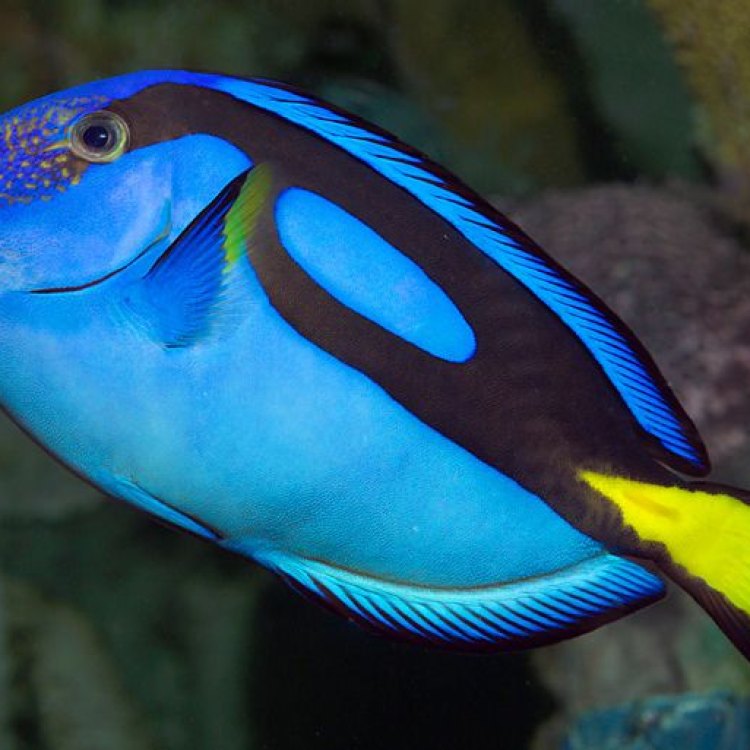
Blue Tang
- Adult Size: Up to 30 cm (11.8 inches)
- Average Lifespan: 10-12 years
- Reproduction: Sexual
- Reproductive Behavior: Group spawning
- Sound or Call: No specific sound or call
- Migration Pattern: Non-migratory
- Social Groups: Schools
- Behavior: Generally peaceful, active swimmers
- Threats: Overfishing, habitat destruction, and pollution
- Conservation Status: Least Concern (IUCN)
- Impact on Ecosystem: Important role in controlling algae growth
- Human Use: Popular in the aquarium trade and as a food fish
- Distinctive Features: Bright blue coloration, sharp spines on the caudal peduncle, and a yellow tail
- Interesting Facts: Blue Tangs are known for their unique ability to change coloration during different times of the day
- Predator: Sharks, large fish, and humans
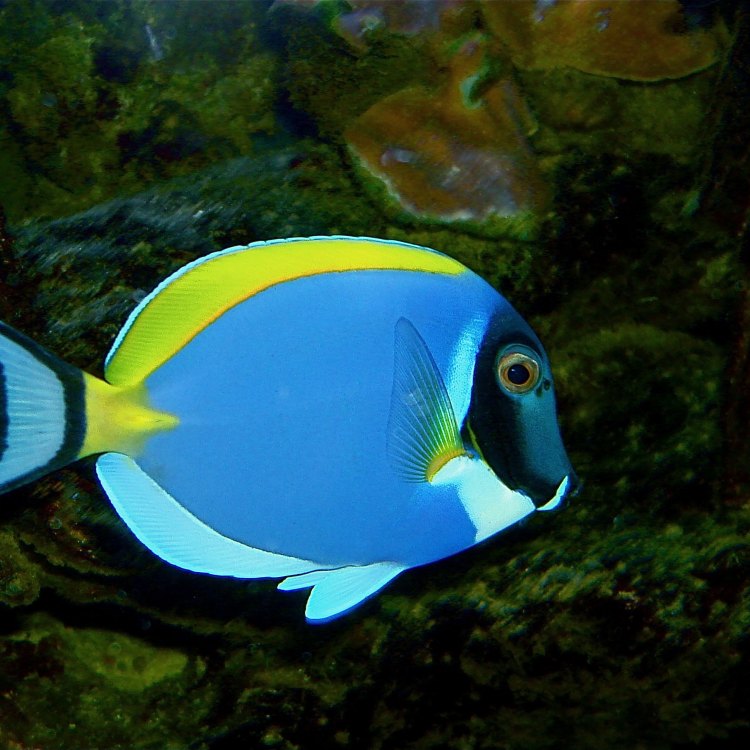
Paracanthurus hepatus
The Enigmatic and Endangered Blue Tang: A Colorful Wonder of the Ocean
Deep in the crystal clear waters of the ocean, there is a vibrant and distinctive fish that captures the hearts of many. Its bright blue coloration, sharp spines, and yellow tail make it stand out amongst its ocean-dwelling counterparts. This is the Blue Tang, also known as the "doctorfish" or "regal tang," and it has a fascinating story to tell.The Blue Tang (Paracanthurus hepatus) is a tropical fish that belongs to the surgeonfish family PeaceOfAnimals.Com. It is commonly found in the Indo-Pacific region, from the eastern coast of Africa to the Oceania islands. This species is also an iconic fish in the popular animated film, Finding Nemo, where the character Dory, a lovable Blue Tang, captured the hearts of children and adults alike with her short-term memory loss and optimistic personality.
But beyond its on-screen fame, the Blue Tang is an enigmatic creature with unique features, behaviors, and a vital role in the ocean's delicate ecosystem. In this article, we will dive deeper into the life of this beloved fish and explore its distinctive attributes, threats, and conservation status.
Exploring the Length and Lifespan of the Blue Tang
The Blue Tang is a relatively small fish, with adults reaching a maximum size of 30 cm (11.8 inches). It has a flat and elongated body, with a pointed snout and a small mouth. Its most distinctive feature is its bright blue coloration, which makes it stand out from other fish in the ocean.On average, this species has a lifespan of 10-12 years in their natural habitat Beaver. However, in captivity, they can live up to 20 years under proper care and conditions. To live a healthy and long life, Blue Tangs require a well-maintained aquarium with enough space to swim and a balanced diet.
The Birds and the Bees: Understanding Reproduction and Reproductive Behavior
Blue Tangs are sexually reproductive fish, meaning that they require a male and a female to reproduce. They reach sexual maturity at around 9-12 months old and can reproduce throughout their lifespan.The reproductive behavior of Blue Tangs is quite fascinating. They are known for their group spawning, where a group of males and females gather and release their eggs and sperm simultaneously. This synchronized spawning is triggered by environmental cues, such as the lunar cycle, and typically happens during the full moon.
The female Blue Tang can lay up to 1,000 eggs during one spawning event. These eggs are protected by a clear, gelatinous coating and are left to develop on their own. The parents do not provide any parental care, and the eggs hatch within 24 hours, releasing miniature versions of the adult Blue Tang.
Discovering the Secrets of the Blue Tang: No Sound or Call, Non-Migratory, and Social Schooling Behavior
One unique feature of the Blue Tang is that it does not have any specific sound or call. While some fish use sound communication for various purposes, such as warning against predators or attracting mates, the Blue Tang relies on its bright blue coloration and sharp spines for defense.These fish are non-migratory, which means they do not undertake long-distance journeys or seasonal migrations. They prefer to stay in their preferred habitats, such as coral reefs, and are not influenced by changes in temperature or food availability.
Blue Tangs are social creatures and are often seen in schools consisting of dozens of individuals. They form these schools for protection against predators, as well as for social interaction and mating. Within the school, they have a hierarchical system, where larger and more dominant fish occupy the front and center positions.
Uncovering the Behavior of the Blue Tang: Generally Peaceful and Active Swimmers
In their natural habitat, Blue Tangs are generally peaceful and active swimmers. They spend most of their time foraging for food, picking at algae and small invertebrates on rocks and corals. They are diurnal, which means they are most active during the day and rest at night.But like any other fish, they can become aggressive in smaller tank settings or when kept with incompatible tank mates. Therefore, it is essential to provide them with enough space and keep them in a school of 3-5 individuals to maintain their peaceful behavior.
The Threats Faced by the Blue Tang: Overfishing, Habitat Destruction, and Pollution
Unfortunately, the Blue Tang, like many other marine species, is facing numerous threats to its survival. Overfishing for the aquarium trade and as a food fish is one of the major concerns for this species. These fish are caught in large numbers and often endure a stressful and long journey to reach pet stores and restaurants.Habitat destruction is another significant threat to the Blue Tang. As a reef-dwelling fish, it relies on coral reefs for food, shelter, and reproduction. With increasing human activities, such as coastal development and pollution, coral reefs are being destroyed at an alarming rate, leaving the Blue Tang without a suitable home.
Pollution from plastic waste, oil spills, and other contaminants also poses a threat to the Blue Tang and other marine species. These pollutants can contaminate their food sources or entangle and harm the fish directly. It is crucial to reduce our impact on the ocean and its inhabitants to protect the Blue Tang and other marine life.
Conservation Status and Impact on the Ecosystem: The Blue Tang's Role in Controlling Algae Growth
According to the International Union for Conservation of Nature (IUCN), the Blue Tang is currently listed as Least Concern on their Red List. While this may seem like good news, it is important to note that this species' population is declining due to the aforementioned threats.The Blue Tang plays a crucial role in the ocean's delicate ecosystem. As herbivorous fish, they feed on algae that grow on coral reefs, preventing overgrowth and maintaining a healthy reef system. Without them, algae would take over and kill the coral, disrupting the entire ecosystem. The loss of this species would have a significant impact on the balance of marine life in their natural habitats.
Human Use: The Blue Tang in the Aquarium Trade and as a Food Fish
Apart from its importance in the ecosystem, the Blue Tang also holds significant value for humans. It is a popular choice in the aquarium trade due to its bright coloration and peaceful nature. However, as mentioned before, the demand for Blue Tangs for the pet trade has put a strain on wild populations.In some parts of the world, the Blue Tang is also consumed as a food fish. Its flesh is considered a delicacy, and it is often served in high-end restaurants. With increasing demand, it is essential to promote sustainable fishing practices to ensure the conservation of this species.
The Colorful Chameleon of the Ocean: Interesting Facts About the Blue Tang
Apart from its ability to change coloration during different times of the day, the Blue Tang has many other interesting characteristics worth mentioning. Its bright blue color is not actually due to pigmentation, but rather the result of light reflecting off its scales. This is also why the color may appear dull when not in its natural habitat.Blue Tangs are known for their resilience and adaptability. They have the unique ability to withstand temperature changes and survive in various water conditions, making them an ideal aquarium fish. This adaptability also helps them thrive in their natural environments, even with threats such as ocean warming and acidification.
The Blue Tang's Natural Predators: Sharks, Large Fish, and Humans
Like many other fish, Blue Tangs also have natural predators in the ocean. These include sharks, which are at the top of the food chain, as well as larger fish species. The Blue Tangs use their sharp spines and swift swimming abilities to evade these predators.However, the biggest threat to the Blue Tang is humans. With overfishing and habitat destruction, we are causing a decline in their population. It is essential to raise awareness and take action to protect these unique creatures and their delicate ecosystem.
In Conclusion
In conclusion, the Blue Tang is not just a colorful and beloved fish, but also a vital member of the ocean's delicate ecosystem. With its unique features, behaviors, and role in controlling algae growth, this species plays an important role in maintaining a healthy marine environment. However, it is facing numerous threats, and it is up to us to take action and protect this enigmatic and endangered species before it's too late.
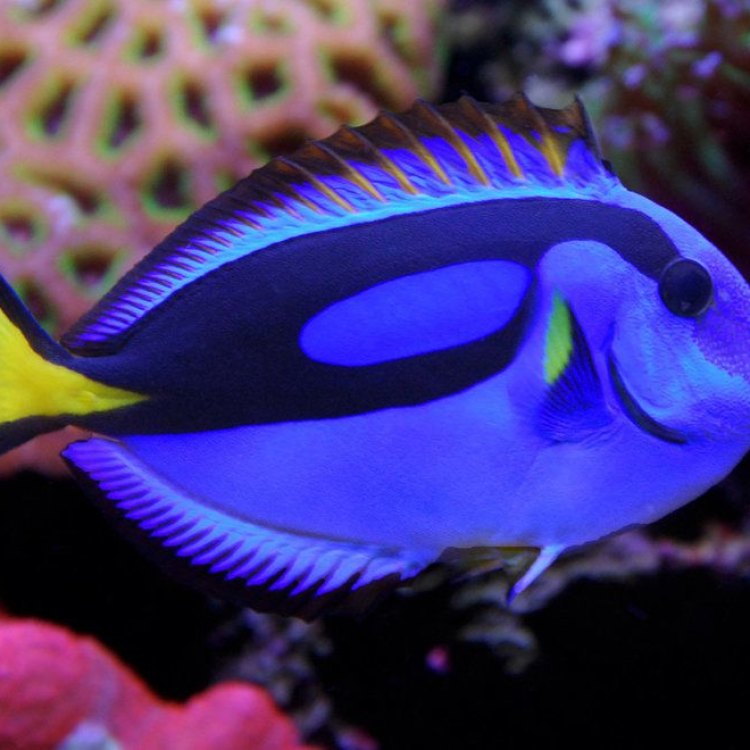
The Enchanting Blue Tang: A Colorful Beauty of the Coral Reefs
Disclaimer: The content provided is for informational purposes only. We cannot guarantee the accuracy of the information on this page 100%. All information provided here may change without prior notice.

